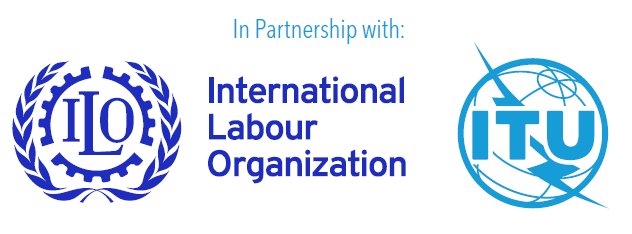2.2 Making recruitment processes more accessible and inclusive: The impact on employment among persons with disabilities
For the last decade, the employment gap between persons with and without disabilities has remained approximately 30 per cent. With many organizations struggling to recruit and retain talent, tapping into the under-utilized pool of talent of persons with disabilities has become more important than ever. To do so, it is essential that persons with disabilities are not discouraged from applying to job vacancies and are given the chance to demonstrate their talents and abilities to perform a role. Making recruitment processes inclusive and accessible enables employers to open them up to a much wider talent pool, reach more highly qualified applicants and diversify the workforce.
Today, most job seekers must engage in some form of digital or online interaction when looking for and applying for a job, as online recruitment websites have replaced printed advertisements as the most popular and scalable method for job searching.
Digital technology can be a great ally in facilitating access to employment for persons with disabilities. For many persons with a disability, however, online interactions can make the job search process much more difficult. As described above, assistive technology users may be unable to read job websites and locate vacancies. Job seekers may not correctly understand the vacancy description if it is not properly structured, if there is copious internal jargon or if the sentences used are too long and difficult to read. Users with hearing loss, blindness or low vision may not understand the content and key messages of recruitment videos if these are not captioned or if transcripts are not provided. The use of poor colour contrast between the text or graphics and the background may prevent users with low vision from reading the information conveyed; it is therefore recommendable to check the contrast ratio between all elements and the background.
At the same time, it is essential that technological advances are accompanied by intense awareness-raising work to eliminate prejudice, indifference and discrimination and promote real inclusion. Research indicates that 48 per cent of persons with disabilities have used adaptive technologies to overcome physical and/or digital barriers (such as virtual mice, or keyboards with covers) and complete their studies, thereby gaining access to a wider job market.7
United Nations entities are encouraged to make their recruitment processes (including online job application portals and systems) inclusive and accessible so that all candidates, including persons with disabilities, can participate. To achieve this, they not only need to have strategies and policies in place but must also ensure that accessibility permeates every area, activity and process, beginning with recruitment.
Recommendations for making recruitment processes more accessible and inclusive:
| Ensure that job vacancy advertisements are web-accessible and are advertised in accessible websites and media (such as specialist disability recruitment portals). | |
| Use plain language to describe the essential requirements of the role. | |
| Avoid making assumptions about who might have a disability (80 per cent of persons with disabilities have hidden impairments). | |
| Make candidates feel comfortable about disclosing their disabilities by being open about the organization’s approach to disability early on. | |
| Allow candidates to submit information in alternative ways, such as by offering the possibility of preparing a video as an alternative to a face-to-face interview. | |
| Be transparent about any medical questionnaires or health checks that the role may require. | |
| Involve at least two persons in candidate shortlisting to mitigate the risk of unconscious bias. | |
| Consider inviting persons with disabilities to test the whole recruitment process (from finding the vacancy on a website, through to applying for the job, conducting an interview and undergoing onboarding). | |
| Make sure all persons involved in the recruitment process have disability-related training. | |
| Provide accessible applications so that candidates can communicate any specific needs or concerns regarding the process without having to declare their disabilities. | |
| Provide captions via all video conferencing platforms. Include captions and audio descriptions for all recorded videos. | |
| Make sure that accessible templates are used when building IT or digital assets to be used internally. | |
| Use accessibility checking functionalities present in authoring and editing tools to test whether digital documents, media and other content created within the organization are accessible to all internal and external users. | |
| Provide candidates with limited mobility or dexterity issues with easier methods of using services, such as tablets instead of standard laptops, or mobile telephones with biometric security features (e.g. facial recognition) to avoid the need to type a passcode. |
